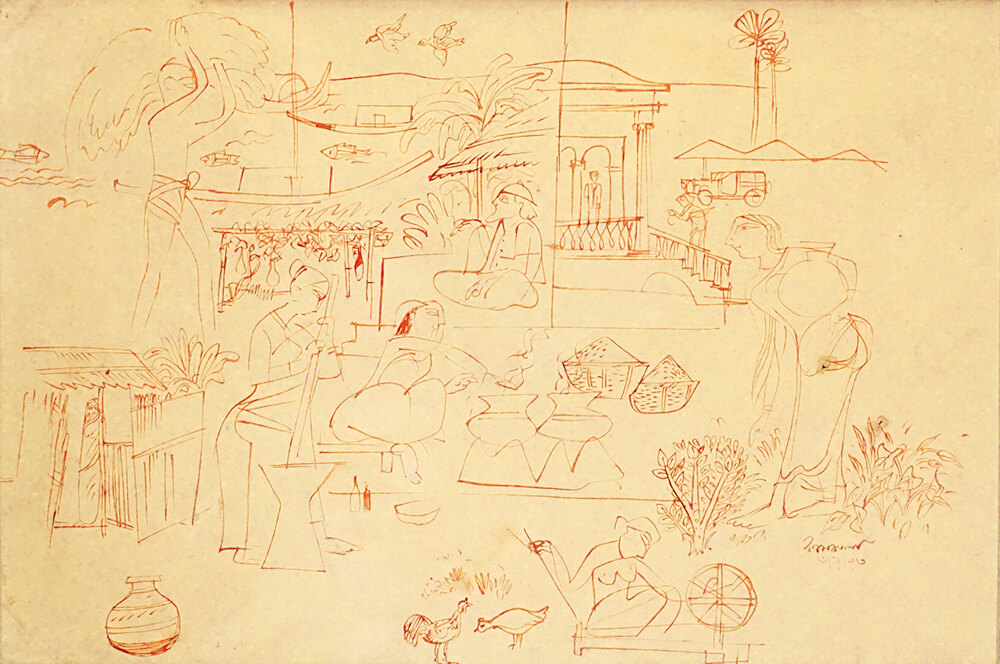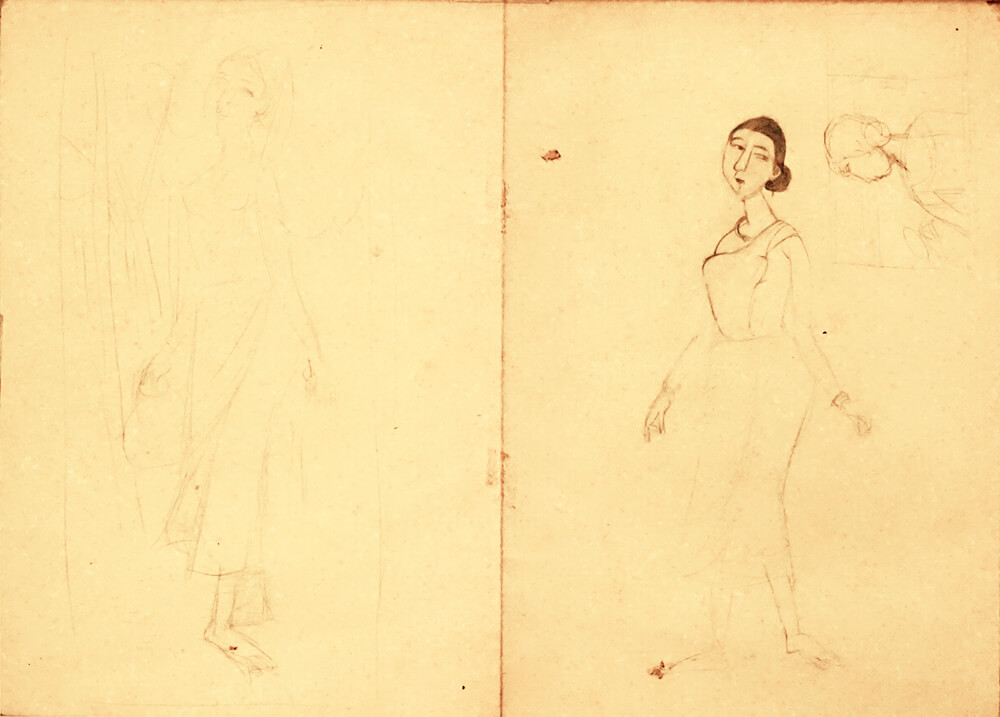Quamrul Hassan painted this one in 1973. In a newly independent Bangladesh, when focuses his lens to capture it, it lands on the myriad character Bengal has. The paints the balanced chaos of eternal Bangla through the women who run its economy, who raise children, and who participate in outside work. He sheds light on the young men who bring crops home and on the storyteller who carries the undying story of the land that shelters him. It is more of a reminiscent of the glorious days of Bengal, the lyrical picturesque setting that has been lost with time.

Quamrul Hassan
Quamrul Hassan, largely referred to as Potua Quamrul Hassan, is a Bangladeshi artist. Born in 921 in Bardhaman, West Bengal, India, he drastically changed the art history of Bangladesh.
Quamrul got enrolled in the Government Institute of Arts (now Government College of Art & Craft), in 1938 and in 1947. He played a leading role in establishing the Government College of Arts and Crafts (presently the Faculty of Fine Art, University of Dhaka) with Shilpacharya Zainul Abedin and taught there until 1960. The East Pakistan Small and Cottage Industries (later Bangladesh Small and Cottage Industries BSCIC) were established under his leadership in 1960. As the head of the Design Centre of BSCIC, he worked tirelessly to invigorate artisanal practices and crafts enterprises, until his retirement in 1978.
He played a major role in the liberation war of Bangladesh in 1971. Through his fierce political cartoons, he inspired the people in civil movements.Two of Hassan’s works have come to be part of Bangladesh’s political history. The first of this is a monstrous rendition of Yahya Khan, the Pakistan president who ordered genocide in Bangladesh. The second was just before his death, mocking the then-dictator of Bangladesh, Hossain Mohammad Ershad. His contribution is enshrined in his designs of the state monogram of Bangladesh, Bangladesh Parjatan Corporation, Bangladesh Bank, and Biman Bangladesh Airlines.
He received the President’s Gold Medal in 1965, Comilla Foundation Gold Medal in 1982, Independence Day Award (highest civilian award instituted by the Government of Bangladesh) in 1979, Bangladesh Charushilpi Sangshad Award in 1984, and Mahbubullah Trust Gold Medal in 1987. Quamrul Hassan worked as a free-lance artist until his passing in 1988
Untitled


Untitled
Women are recurring figures in Quamrul Hassan’s painting and in this 1973 freestyle sketch he once again goes back to it. With his repeating depiction of women in his arts, he tried to tell the journey and experience of women that is often overlooked. In his women, he finds the beauty and essence of Bengal. He infuses his own sense of Bengal with the age-old style of folk art. He paints them loud and clear creates a new form of painting, ubiquitously Bengali, but quintessentially global. His women are his love for his country, its rural life, its beauty.
Artist Art Style
Quamrul Hassan is famous for his folk style of art. His fierce participation in the politics of Bangladesh makes him one of the integral parts of the history of Bangladesh. The subjects range from colorful pictures depicting a pristine, rural Bengal to a politically corrupt, degenerate one. His ability to combine traditional data painting techniques and folk motifs in a modern paradigm earned him the name of ‘Patua Quamrul Hassan’.
